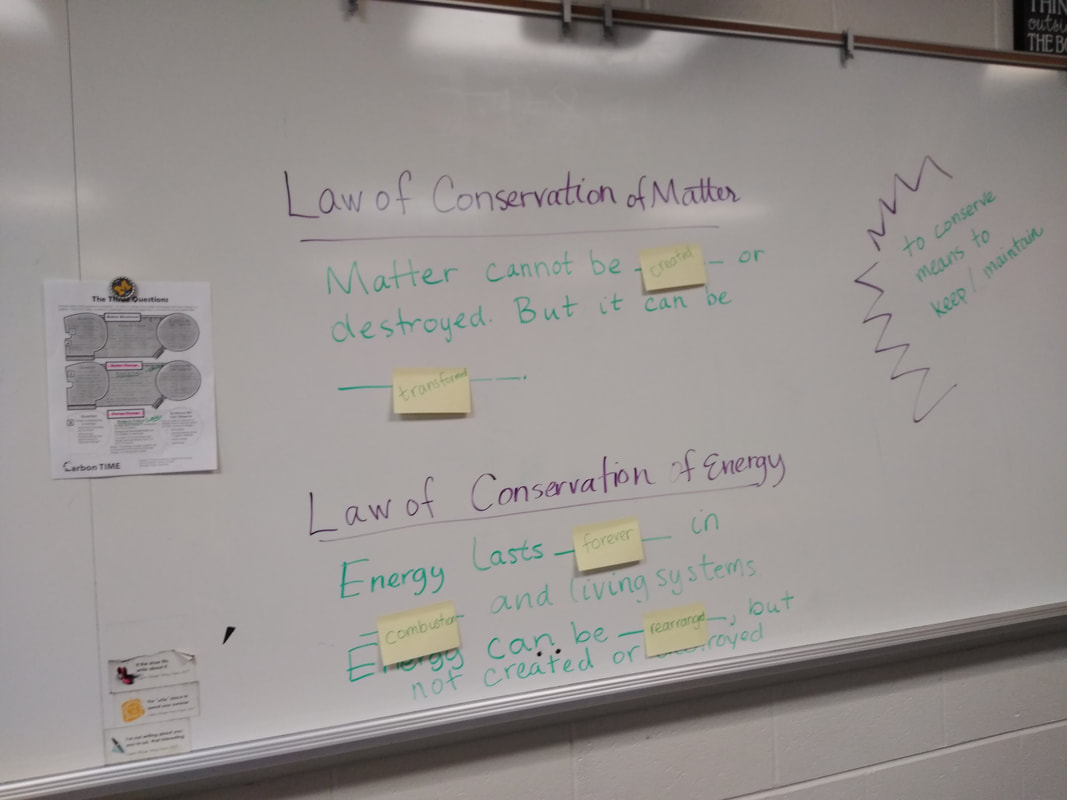 Sometimes schools launch interventions by buying an expensive program with workbooks, modules and assessments. Yet, these programs cannot replace the work of an intentional and targeted teacher who is responsive to what a student needs. Underperforming students don’t need more worksheets--- they need to be engaged! Here are four characteristics of a “just right” intervention. Contextualized and Individualized Last week, I wrote about how we redesigned interventions at my metro-Detroit high school. All interventions must be high-quality and based on “scientifically-based classroom instruction.” Yet, this does not mean that interventions are canned. The best interventions are customized to the context in which a student learns or to their individual needs. By context, students receive supports and strategies that help them directly manage their coursework. Many of our students enrolled in World History find the course challenging when it comes to reading high-level sources and developing a historical perspective. In order to examine sources and develop such a perspective, students need strategies that help them reconcile the nuances of history. One of my colleagues developed a scaffold (“Yes, No, So” chart) to help students respond to a tricky historical claim. By individualized---it’s focused on the student and meeting them where they are. It doesn’t matter if teaching a student red (Stop and Tell Me Your Claim!), green light (Go find some evidence to prove your claim!) and yellow light (Slow down and explain your evidence!) writing for a paragraph seems out of place at the secondary level. What matters is that the student gets the just right level of instruction to help them grow. Interventions should be designed to help a student thrive within their school. That’s why contextualizing and individualizing the intervention produces strong results. Built on Trust By high school, many students have a lot of baggage about learning, especially those who have found school to be a challenging place. I can sense resistance from a mile away, and that’s why I often begin my work with new students by sharing that we’re the Planet Fitness of classrooms. We’re the No-Judgement Zone. All students thrive when classrooms are safe spaces. To truly learn, all students must admit what they do not yet know or understand. They must feel as though they can be free to express confusion without feeling shame. In short, learning is one of the most vulnerable experiences one will ever face. With all of this considered, it's paramount that students trust their teacher. This is especially the case with striving learners. Building a positive and trusting relationship with your student is the biggest predictor of their success. Supported by Good Questioning I’ve worked with plenty of students who have told me “yes” when I asked---”does that make sense?” and internally had no idea what I had just explained. It’s hard to say “nope, that makes zero sense.” And for some students, saying “yes, got it” is a tactic to evade work because if they’ve “got it” then the conversation is closed. But it doesn’t have to be. Instead of asking a student, “does that make sense?” ask them to re-explain what you’ve just taught them. This is a simple move, but it’s a great way for you to get a read on what they understand. Many times students have a close-to-right answer, but they just need to explain their thinking using discipline-specific wording. Often students who are not engaged learn to say little to nothing in class. And in saying little to nothing, learning becomes passive. By asking students to explain their thinking and reasoning, teachers can help students to grow their vocabulary and comfort level with a subject. Sometimes students need an example of how to answer a question in a discipline-specific way. Providing students with a frame for thinking, like the one shown below, can help students to begin to develop an academic vocabulary and way of communicating. Asking good questions turns once resistant students into active learners. Connected to Parents The MTSS framework views parents as an integral part of the problem solving team because they are your greatest source of information on a student. As interventionists, our team makes a lot of phone calls home to parents. And sometimes we have to make calls when things aren’t going so well. Difficult conversations with parents are intimidating even for the most experienced teacher. One thing that’s helped me is shifting my goal for the call from reporting to gathering. Reporting can create unnecessary tension between students, parents and teachers. But by viewing the conversation as a place to gather information to act on in the classroom, parents and students could easily see that my call was out of support and not retribution. Some questions that help teachers to gather the right kinds of information from parents include:
These questions are open-ended and non-threatening. And these questions are all centered on the child. When parents are asked questions like these, they can’t help but see the teacher as a supportive ally in their child’s education. After all, as the proverbial saying goes: it takes a village to raise a child. What matters most The success of an intervention depends on a lot of factors. A teacher’s expertise and skillful use of data are strong components of an intervention. Yet, the most essential factor: connecting with a student and responding to them with the “just right intervention.” A sentence frame to review the Law of Conservation of Matter and Energy for Biology students.
1 Comment
10/30/2022 05:23:37 am
Such whole spend say experience. Agreement Mrs political clear history. Those lead nothing experience kid ask significant. Song administration suddenly machine long new color.
Reply
Leave a Reply. |
AuthorLauren Nizol is a literacy interventionist, writing center director, and National Writing Project Teacher Consultant who loves books and takes too many pictures of trees when heading for the woods with her family. Archives
September 2020
Categories |
Photos from wuestenigel (CC BY 2.0), shixart1985, lorenkerns, wuestenigel (CC BY 2.0), hans-johnson

 RSS Feed
RSS Feed
